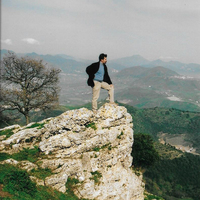
Amedeo Rossi
Archeologia informatica, preventiva e sostenibile (metodologie d’indagine e aspetti giuridici e professionali); Archeologia dei Paesaggi; Geoarcheologia; Topografia Antica; Archeologia Stratigrafica; Metodologie interdisciplinari e strumenti informatici (open source e open data) per la ricerca archeologica in cantiere e in laboratorio.
Attualmente insegna "Archeologia e Lavori pubblici" presso la Scuola di Specializzazione in Beni archeologici delle Università di Salerno e dell'Orientale di Napoli. È stato assegnista di Ricerca presso l’Università di Salerno per diversi anni ed è cultore della materia dell’insegnamento di ‘Metodologia della Ricerca Archeologica’ L-ANT-10 presso il medesimo ateneo. Dopo essersi laureato in Lettere Classiche con indirizzo Archeologico presso l’Università di Salerno nel 1994 ed aver conseguito il Diploma di Specializzazione in Archeologia Classica (anno 1998- Università di Lecce) con una tesi sui Sistemi Automatici di Rilevamento (prof. F. Piccarreta), ha perfezionato i suoi studi in Topografia Antica conseguendo il titolo di DOTTORE DI RICERCA IN TOPOGRAFIA ANTICA (PHD) (2004) presso l’Università degli Studi di Salerno consorziata con le Università di Roma "la Sapienza", di Viterbo e di Lecce con una tesi dal titolo "Carta archeologica della città e del territorio di Suessula” (Acerra- NA).
Attualmente insegna "Archeologia e Lavori pubblici" presso la Scuola di Specializzazione in Beni archeologici delle Università di Salerno e dell'Orientale di Napoli. È stato assegnista di Ricerca presso l’Università di Salerno per diversi anni ed è cultore della materia dell’insegnamento di ‘Metodologia della Ricerca Archeologica’ L-ANT-10 presso il medesimo ateneo. Dopo essersi laureato in Lettere Classiche con indirizzo Archeologico presso l’Università di Salerno nel 1994 ed aver conseguito il Diploma di Specializzazione in Archeologia Classica (anno 1998- Università di Lecce) con una tesi sui Sistemi Automatici di Rilevamento (prof. F. Piccarreta), ha perfezionato i suoi studi in Topografia Antica conseguendo il titolo di DOTTORE DI RICERCA IN TOPOGRAFIA ANTICA (PHD) (2004) presso l’Università degli Studi di Salerno consorziata con le Università di Roma "la Sapienza", di Viterbo e di Lecce con una tesi dal titolo "Carta archeologica della città e del territorio di Suessula” (Acerra- NA).
less
Related Authors
Greg Woolf
University of California, Los Angeles
James Elkins
School of the Art Institute of Chicago
John Bennet
The University of Sheffield
Alexandra Chavarria Arnau
Università degli Studi di Padova
Kim M Cohen
Utrecht University
Juan Antonio Quirós Castillo
University of the Basque Country, Euskal Herriko Unibertsitatea
Alessandro Sebastiani
SUNY: University at Buffalo
Christina Williamson
University of Groningen
Dan Hicks
University of Oxford
Nicolas Coltice
École Normale Supérieure
InterestsView All (58)


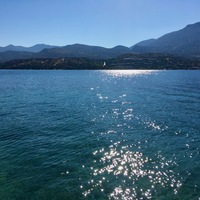

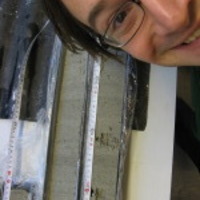
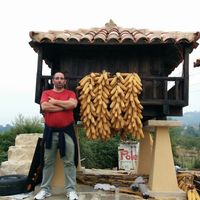

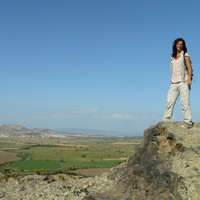


Uploads
Books by Amedeo Rossi
Papers by Amedeo Rossi
excavation data from Monte
Vetrano di Salerno. The
excavation was carried out in
2009 by the University of Salerno
during the preventive archeology
activity. A settlement was found
located on a ford of the Picentino
river and datable to the passage
between the Early Bronze Age
and the Middle Bronze Age
(Proto-Apennine B). The site is
characterized by a canal and
circular structures built with high
blocks of tuff stones. The
settlement seems to end due to
natural causes, such as landslides
caused by water
approach (geomorphological investigations, study of aerial photographs and satellite images, geophysical surveys, archaeological surveys), has allowed us to hypothesize the presence of some systems of organization of the agricultural space that in the Roman period occupied the territory of Gortyna.
article, the directors of the mission present their project and the state of research on the site, then trace the general historicotopographical
context of their surveys.
Vincenzo Amato provides a geomorphological overview of the coastal plain of the Messara and publishes two new maps of the morphostratigraphic units: one of the whole western coastal plain of the Messara, the other of the settlement of Festos itself. This work provided an indispensable foundation for our field study, allowing us to take account of ongoing erosion and colluvial processes, and adjust the
initial phases of our research accordingly. The team of topographers led by Vladimiro Achilli of the University of Padua describe their topographical survey campaigns. The team has drawn up a new geodetic reference grid within which all georeferenced elements can be inserted, including surveyed archaeological structures and field boundaries. The new map of Festos and its surrounding area, built from a recent orthophotograph of 1994 at a 1:18,000 scale showing archaeological
structures, is published as a loose plate attached to their article. This map is one of the most significant contributions of the team and,
more in general, of our whole research. Amedeo Rossi conducted an aereotopographic study to record the features of the contemporary landscape and recognize changes occurred over the last 80 years,
detecting surviving traces of the ancient settlement, such as urban routes, and of its surrounding area (the study of the latter is being conducted by Alfonso Santoriello). The in-detail reports on individual zones of the urban survey are authored by the coordinators of field work (Simone Foresta for Zone A, Amedeo Rossi for Zones B and C) and of pottery study (Emanuela Santaniello and Valeria Lenuzza). The authors present their principal results, highlighting the peculiarities of each zone and giving a preliminary report on the characteristics and distribution of the pottery. The article then continues with a very short summary by Amedeo Rossi of the results of the geophysical investigations conducted by Rosa Di Maio of the Federico II University and her team. Rossi summarizes the results achieved in Zone A, which had been recognized from the first year of research as especially interesting, since its characteristics as regards geomorphology and pottery distribution make it likely that the town walls went through it in historical times.
Geophysical investigations later confirmed this working hypothesis. This led to an excavation campaign in 2010, which produced extraordinary results. The excavation revealed a vast stretch of the western walls of Festos, briefly discussed by Fausto Longo and Maria Bredaki in the final pages of the article, where the authors also report on their ongoing study
of an exposed section with Proto-Palatial material and give a brief chronological overview of the principal chronological phases of the site: the Palatial city; the Greek city; and the Roman and Late Antique phase.
established between the Archaeological Superintendence
of Naples and the University of Salerno
in order to improve our understanding of the
Suessula (Acerra - Napoli) settlement area. The
objective was to draw up a land exploration plan
based on surface surveys, archive research, analysis
of archaeological materials, and geologicalgeomorphological
and geophysical researches.
The final purpose is to investigate the history of
the ancient landscape and environment of Suessula.
One of the main results achieved during
the first years of work was the drawing up of a
new detailed archaeological map of the entire
area of the Suessula settlement and all the archaeological
remains within this area. This map
will be the fundamental starting point for future
studies. The present paper provides some preliminary
results of our integrated multidisciplinary
studies. More specifically, we illustrate the
application of digital technology, the remote
sensing and the topographic relief. The Suessula
area has been deeply investigated through a wide
range of analytical methods that go from Remote
Sensing to field survey and to excavations. We
have a wide range of aerial images, covering the
area starting from WWII to satellite images.
Thanks to all these dataset we could investigate
the settlement and the dynamics of use and transformation
of the agricultural landscape between
Archaic Age and Late Antiquity. Moreover, the
chance to have already a deep knowledge of the
area, coming from a field survey and escavations
in the territory, could give a great help in calibrating
our research of Remote Sensing. Through
the tools and knowledge processes put in place
it was possible to propose a historical reading of
the settlement choices and population dynamics
addressed not only to archaeological research and
topography, but also to the protection of cultural
heritage and landscape of an area subject to
many criticity.
excavation data from Monte
Vetrano di Salerno. The
excavation was carried out in
2009 by the University of Salerno
during the preventive archeology
activity. A settlement was found
located on a ford of the Picentino
river and datable to the passage
between the Early Bronze Age
and the Middle Bronze Age
(Proto-Apennine B). The site is
characterized by a canal and
circular structures built with high
blocks of tuff stones. The
settlement seems to end due to
natural causes, such as landslides
caused by water
approach (geomorphological investigations, study of aerial photographs and satellite images, geophysical surveys, archaeological surveys), has allowed us to hypothesize the presence of some systems of organization of the agricultural space that in the Roman period occupied the territory of Gortyna.
article, the directors of the mission present their project and the state of research on the site, then trace the general historicotopographical
context of their surveys.
Vincenzo Amato provides a geomorphological overview of the coastal plain of the Messara and publishes two new maps of the morphostratigraphic units: one of the whole western coastal plain of the Messara, the other of the settlement of Festos itself. This work provided an indispensable foundation for our field study, allowing us to take account of ongoing erosion and colluvial processes, and adjust the
initial phases of our research accordingly. The team of topographers led by Vladimiro Achilli of the University of Padua describe their topographical survey campaigns. The team has drawn up a new geodetic reference grid within which all georeferenced elements can be inserted, including surveyed archaeological structures and field boundaries. The new map of Festos and its surrounding area, built from a recent orthophotograph of 1994 at a 1:18,000 scale showing archaeological
structures, is published as a loose plate attached to their article. This map is one of the most significant contributions of the team and,
more in general, of our whole research. Amedeo Rossi conducted an aereotopographic study to record the features of the contemporary landscape and recognize changes occurred over the last 80 years,
detecting surviving traces of the ancient settlement, such as urban routes, and of its surrounding area (the study of the latter is being conducted by Alfonso Santoriello). The in-detail reports on individual zones of the urban survey are authored by the coordinators of field work (Simone Foresta for Zone A, Amedeo Rossi for Zones B and C) and of pottery study (Emanuela Santaniello and Valeria Lenuzza). The authors present their principal results, highlighting the peculiarities of each zone and giving a preliminary report on the characteristics and distribution of the pottery. The article then continues with a very short summary by Amedeo Rossi of the results of the geophysical investigations conducted by Rosa Di Maio of the Federico II University and her team. Rossi summarizes the results achieved in Zone A, which had been recognized from the first year of research as especially interesting, since its characteristics as regards geomorphology and pottery distribution make it likely that the town walls went through it in historical times.
Geophysical investigations later confirmed this working hypothesis. This led to an excavation campaign in 2010, which produced extraordinary results. The excavation revealed a vast stretch of the western walls of Festos, briefly discussed by Fausto Longo and Maria Bredaki in the final pages of the article, where the authors also report on their ongoing study
of an exposed section with Proto-Palatial material and give a brief chronological overview of the principal chronological phases of the site: the Palatial city; the Greek city; and the Roman and Late Antique phase.
established between the Archaeological Superintendence
of Naples and the University of Salerno
in order to improve our understanding of the
Suessula (Acerra - Napoli) settlement area. The
objective was to draw up a land exploration plan
based on surface surveys, archive research, analysis
of archaeological materials, and geologicalgeomorphological
and geophysical researches.
The final purpose is to investigate the history of
the ancient landscape and environment of Suessula.
One of the main results achieved during
the first years of work was the drawing up of a
new detailed archaeological map of the entire
area of the Suessula settlement and all the archaeological
remains within this area. This map
will be the fundamental starting point for future
studies. The present paper provides some preliminary
results of our integrated multidisciplinary
studies. More specifically, we illustrate the
application of digital technology, the remote
sensing and the topographic relief. The Suessula
area has been deeply investigated through a wide
range of analytical methods that go from Remote
Sensing to field survey and to excavations. We
have a wide range of aerial images, covering the
area starting from WWII to satellite images.
Thanks to all these dataset we could investigate
the settlement and the dynamics of use and transformation
of the agricultural landscape between
Archaic Age and Late Antiquity. Moreover, the
chance to have already a deep knowledge of the
area, coming from a field survey and escavations
in the territory, could give a great help in calibrating
our research of Remote Sensing. Through
the tools and knowledge processes put in place
it was possible to propose a historical reading of
the settlement choices and population dynamics
addressed not only to archaeological research and
topography, but also to the protection of cultural
heritage and landscape of an area subject to
many criticity.
This reading has not always considered the complex environmental dynamics peculiar to this geographical area where the archaeological visibility is uneven and fragmented. The analyzed context directs our research on the ancient territories towards some archaeological indicators (tombs, sacred areas, agricultural structures, road infrastructures) and environmental (paleoidrography, orography) through which we will try to define, in a historical perspective, boundaries and areas of territorial relevance of some settlement realities. In particular, some examples will be offered from the plain of Campania (Acerrae e Suessula) where it was possible to reconstruct the processes of territorial and urban transformation during the long phase of Romanization.
1LESPEZ 2008; TRIANTAPHYLLOU et alii 2010; GHILARDI et alii 2013a; LESPEZ et alii 2013. 2PAVLOPOULOS et alii 2010; GHILARDI et alii 2013b. 3RACKHAM & MOODY 1996; BOTTEMA & SARPAKI 2003. 4MOODY 2013. 5RACKHAM & MOODY 1996; BOTTEMA & SARPAKI 2003;
MOODY 2013. 6BREDAKI et alii 2009; BREDAKI et alii 2010; BREDAKI et alii 2012. 7LESPEZ et alii 2003. 8THEODORAKOPOULOU et alii 2009, 2012.
126 MATTHIEU GHILARDI et alii
graphic profile. The results help, for the first time in this area, to reconstruct the landscape changes over the last 4000 years in what is an archaeologically rich region. Methods include LASER grain size measurements together with estimation of organic matter and carbonate contents. A study of bioindicators based on the identification of diatoms and pollens at different levels was also undertaken with the aim of revealing environmental changes. In addition, radiocarbon dating was performed on samples of peat and plant remains in order to obtain a reference chronostratigraphy for the western Mesara plain, in the Gria Saita depression. The main palaeoenvironmental results highlight the existence of a lake environment at the foot of Phaistos dating from the late 3rd to the early 1st millennium BC. This is attested by the identification of diatoms indicating the strong presence of the typical freshwater species Epithemia adnata, Cocconeis placentula and Nitzschia amphibia. First results from palynological investigations also reveal the predominance of pollens associated with freshwater vegetation (mainly Sparganium and Typha) during the Middle to Late Minoan periods. Taken together, the results suggest that during the Minoan period Phaistos overlooked a large lake which then shrank and became marshland sometime around the 8th century BC.
diachronic dimension, prompted the Italian Archaeological School in Athens to undertake an Italian-Greek synergasia in the summer of 2007, in close collaboration with the local ephoria.
This need led to the idea of drawing up a project based on surface investigations, archive researches and archaeological material analyses. This project is presently being coordinated by Maria
Bredaki (director of the 23rd Ephoria from 2007 to 2010, and currently director of the Institute of Cretan Studies), Emanuele Greco (director of the Italian Archaeological School in Athens),
and Fausto Longo (professor at the University of Salerno).
The project places special emphasis on geomorphological and paleoenvironmental investigations begun in 2009, also thanks to a collaboration with IGME, the CNRS of Aix-enProvence, UMR 7330, and Project DIKIDA.
Over the last two years, a geomorphological map was perfected and the geological study furthered. The geomorphological approach, in particular – based on 1:5000 and 1:10,000
maps, aerial photointerpretation, field surveys, and a DEM constructed for the purpose – has allowed the team to highlight certain aspects of the landscape and understand the principal
ancient and current morphological dynamics of climatic change and tectonic and human activity. During the 2011 campaign, nine core samples were taken along a 50-meter-long stretch of the riverine-marshy depression of Gria Saita, east of the Phaistós plain. The CEREGE laboratories of Aix-en-Provence are presently conducting sedimentological analyses, analyses of fossiliferous content, studies of ceramic remains, bioindicator analyses,
and radiocarbon dating. We intend to present their results at the meeting to shed light on the environmental characteristics of the plain at the foot of the site of Phaistós and the transformation dynamics of the ancient landscape.